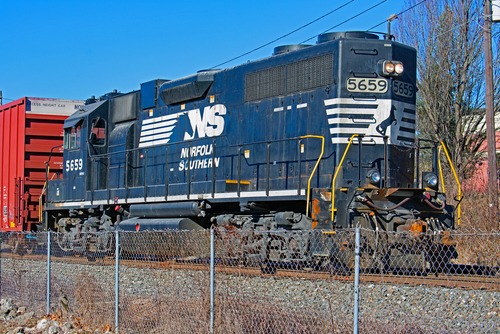
Norfolk Southern Corp. on July 10 endorsed policy recommendations from the National Transportation Safety Board (NTSB) regarding the agency’s investigation into the railroad company’s 2023 East Palestine, Ohio, train derailment.
The NTSB recommendations align with safety initiatives currently underway at Norfolk Southern, according to Alan Shaw, president and CEO of Norfolk Southern.
“Norfolk Southern and the NTSB share the same goal when it comes to safety,” Shaw said on Wednesday. “We’re committed to taking action that addresses their recommendations and to becoming the gold standard of safety for the industry.”
The five-member NTSB last month unanimously adopted a report on its investigation into the Norfolk Southern train derailment that included several recommendations and findings.
Most noteworthy, NTSB investigators found that the post-derailment decision by the local incident commander to conduct a vent and burn of the contents of the tank cars carrying toxic vinyl chloride monomer was based on incomplete and misleading information provided by Norfolk Southern officials and contractors.
Paul Stancil, an NTSB hazardous materials investigator, told the NTSB board at its June meeting that the vent and burn procedure was unnecessary because there was no evidence at the scene indicating an uncontrolled explosion was imminent.
Today, the subsequent burn-off of toxic chemicals continues to impact the community in East Palestine, where the vent and burn released numerous contaminants into the air, soil, and water.
Nearly 1.5 years after the derailment and chemical burn, site remediation is ongoing as Norfolk Southern and other agencies continue to monitor groundwater, post-rain sediment samples from area waterways, and samples of the village’s public drinking water system.
On Wednesday, NTSB Chair Jennifer Homendy met with senior leadership at Norfolk Southern to discuss the company’s progress in implementing the agency’s recommended safety initiatives and addressed more than 80 operational leaders during the railroad’s three-day Safety Summit seminar for labor leaders and field supervisors.
“We have a deep respect for Chair Homendy and the important work of the NTSB,” Shaw said. “We appreciate her leadership, willingness to collaborate with us on next steps, and direct engagement with our operational leaders.”
Homendy also toured Norfolk Southern’s Network Operations Center and viewed a demonstration of RapidSOS, a digital platform that connects devices among 16,000 emergency response agencies to immediately provide first responders with real-time access to train consists, train locations, and emergency response protocols.
The NTSB national safety policy recommendations include initiatives to improve the performance of defect detection systems, modernize the nationwide tank car fleet carrying certain types of hazardous materials, and quickly put critical real-time information in the hands of emergency responders.
Shaw said that Norfolk Southern also continues to support enactment of bipartisan legislation that would advance safety in America’s rail industry, including those safety policy initiatives aligned with the NTSB recommendations.
Over the last 16 months, according to Norfolk Southern’s 2024 Midyear Report on Safety Accomplishments and Ongoing Initiatives, the company has implemented several safety improvements and technologies that align with the NTSB recommendations, including partnering with RapidSOS and forming a Vent and Burn Workgroup to assess current practices and protocols toward improving coordination for future events where a vent and burn may be necessary.
Norfolk Southern, with input from the workgroup, plans to develop a Vent and Burn Coordination Procedure that could serve as an industry standard, the company said.
Additionally, the railroad continues to invest resources in training first responders on hazmat response and broke ground on a new regional first responder training center in East Palestine, Ohio. Norfolk Southern plans to invest $25 million in the new center.